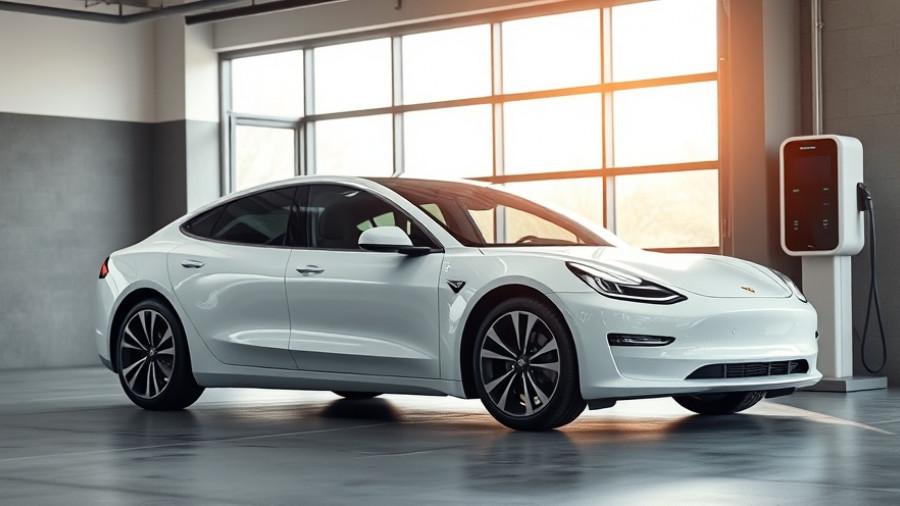
Stellantis Appoints New Leadership for Citroën: A Shift in Strategy?
In a significant yet muted shuffle in executive leadership, Stellantis has announced the appointment of Xavier Chardon as the new CEO of Citroën, effective June 2, 2025. He takes over from Thierry Koskas, who has served as the brand's head for the past two years. While the transition marks a change in leadership, it hints at continuity rather than radical change for the Citroën brand within the expanded Stellantis family.
Assessing the Future Path for Citroën Under Chardon
The decision to bring Chardon back, who has extensive experience with Citroën, may suggest that Stellantis aims to build on recent successful product launches like the C3, C3 Aircross, and the newly unveiled C5 Aircross. These models are crucial to Citroën’s current lineup and reflect the firm’s strategy of consolidating its brand identity and market share in the European automotive sector.
Stellantis has not indicated whether Koskas will pursue further opportunities within the organization or elsewhere, leaving many questions unanswered regarding the internal dynamics at the newly formed automotive giant. This lack of transparency surrounding Koskas's future raises eyebrows about the strategic direction of Stellantis, particularly as it pertains to revitalizing Citroën in a competitive landscape dominated by electric vehicles (EVs) and sustainability.
Chardon’s Background: Bringing Experience to a Modern Automotive Landscape
Xavier Chardon is no stranger to Citroën, having dedicated nearly two decades to the brand before transitioning to roles within Volkswagen. His recent position as CEO of Volkswagen Group France gave him a broader perspective on market dynamics, but his last tenure at Citroën dates back to 2011, raising questions about how current trends will shape his approach moving forward. The automotive landscape has shifted dramatically in recent years, especially concerning green technology integration, an area where Stellantis is emphasizing growth.
Implications for the Automotive Market and the Push for EV Integration
As previously highlighted, the automotive industry is undergoing significant transformations towards electric mobility and eco-friendly technologies. Chardon's leadership could align Citroën’s strategy with Stellantis's ambitious goals for EV proliferation. In light of the current global push towards decarbonization, the new CEO’s ability to innovate within this sector will be pivotal—not only for Citroën's survival but also for its competitive edge against rivals.
Another crucial aspect of this leadership change is the reinforcement of Stellantis’s commitment to sustainability. The brand's recent launches hint at a growing alignment with green energy solutions that appeal to environmentally conscious consumers. As homeowners and businesses increasingly adopt solar power for energy independence, the automotive sector must adapt in tandem, promoting electric vehicles as part of a broader sustainable lifestyle.
What This Means for Consumers and the Future of Green Mobility
The appointment of Chardon raises questions for consumers regarding the future offerings from Citroën. As electric vehicles become an integral part of eco-friendly living, brands must configure their product strategies to appeal to this environmentally aware demographic. With Citroën’s exploration of hybrid and fully-electric models, consumers may anticipate a shift in marketing that aligns with these evolving priorities.
Moreover, the leadership transition reminds consumers that companies are navigating a complex interplay of legacy concerns and forward-thinking innovations. The market for electric vehicles is rapidly maturing, driven by consumer demand for greener alternatives. Brands like Citroën must ensure that their offerings resonate with this shift while providing reliable and innovative solutions to current challenges.
Conclusion: A Time of Change Yet Continuity
As the automotive industry continues to pivot towards a greener future, the leadership change at Citroën reflects both the need for seasoned expertise and a commitment to existing strategic frameworks. The actual impact of this transition will hinge on Chardon’s ability to leverage his experience while driving the shift towards sustainable practices within the Citroën brand. For consumers and stakeholders, the focus must remain on how these changes translate into real-world applications, especially in the context of energy-efficient vehicles and eco-friendly initiatives.
This transition opens the dialogue on how companies in the automotive sector can align their strategies with broader sustainability goals. For those considering renewable energy solutions for their homes or businesses, following Citroën’s evolution amidst changing market conditions can provide insights into how the automotive industry approaches the growing demand for green solutions.
The challenge for Chardon is clear: evolve Citroën to meet the demands of a changing marketplace while maintaining the brand’s unique identity. The stakes have never been higher as consumers become more conscious of their environmental impact and demand greater accountability from manufacturers.
 Add Row
Add Row  Add
Add 



Write A Comment